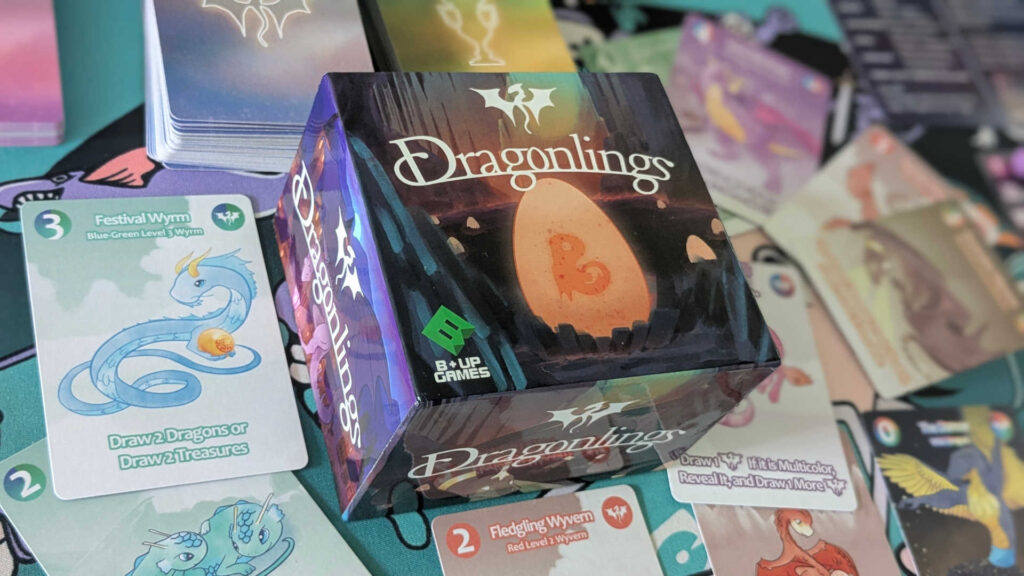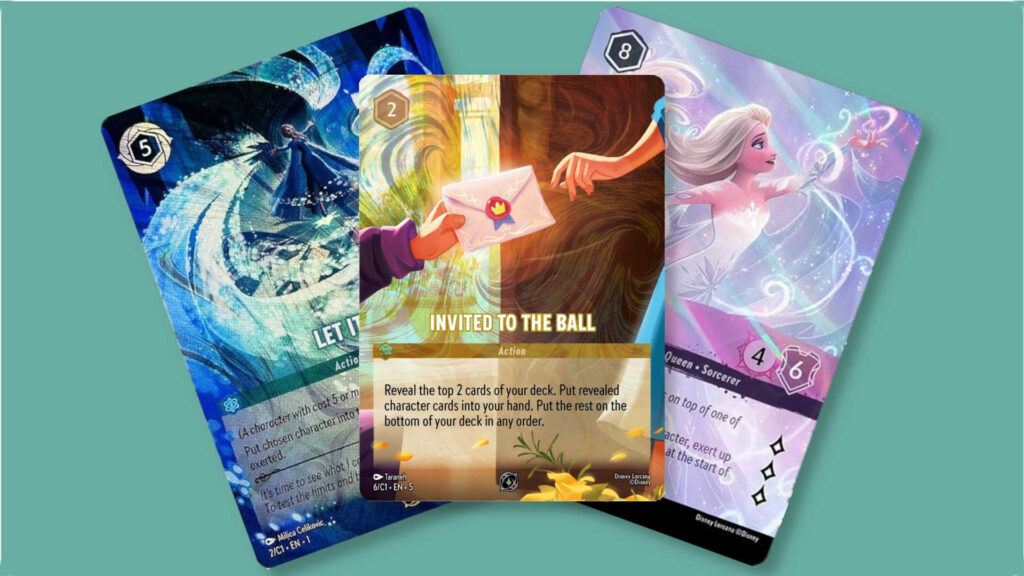It seems that hatching, raising and training cute creatures is a popular subject for card games, but most of them also involve your growing monsters battling those being raised by your opponents. That’s the case in titles such as Pokémon, Digimon and countless others, but in new card game, Dragonlings, you’ll raise a nursery of hatchlings all the way through to adulthood, and there’s no combat or violence involved whatsoever. So let’s take a closer look at Dragonlings, and find out whether it’s worth playing!
Table of Contents
ToggleWhat Is Dragonlings?
A cozy and casual card game with adorable, whimsical illustrations, up to 6 players can take part in Dragonlings, with solo play also being supported (you can find the solo rules on YouTube). It’s very accessible, and its refreshing lack of combat means that it’s suitable for even the youngest of players, as long as they can read the card text!
How to Play Dragonlings
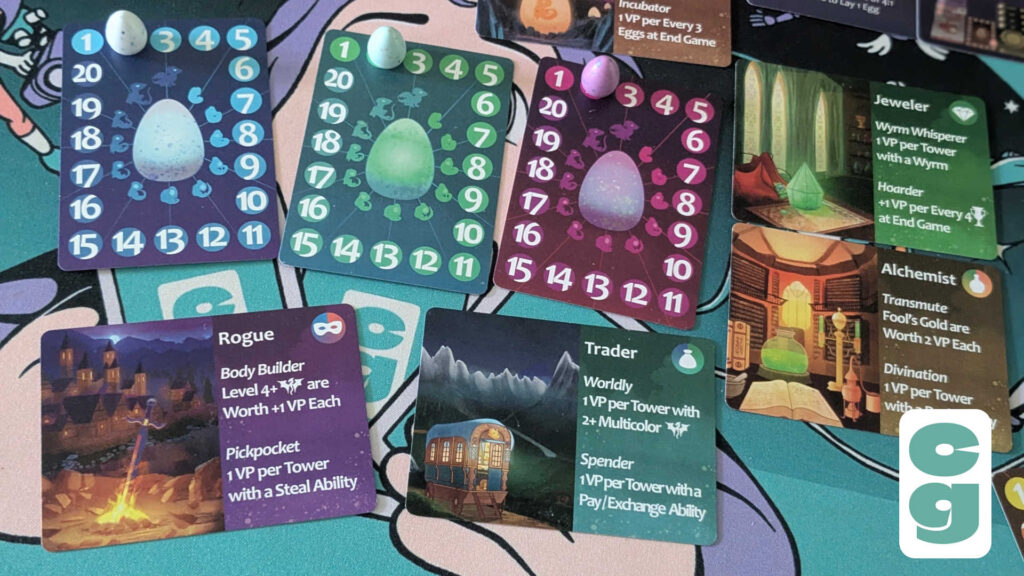
To start a game of Dragonlings, each player takes an Egg Counter card, a corresponding Egg token, a Trainer card (the rules don’t specify whether this is drawn randomly or chosen, but as long as all players agree on the method, either should be fine) and then draws 7 Dragon cards.
Each turn, the active player will first draw 1 Dragon card, then reset all of their Dragon towers so the top card of each is upright (more on this shortly!). In any order, they can then do the following:
- Spend 1 Egg to draw 1 Hatchling card, which comes into play immediately. The Hatchling card is placed in front of its player, oriented upside down (all Dragons enter play with ‘growing pains’, which means their abilities can’t immediately be used). A Hatchling card forms the start of a new Dragon tower.
- Grow an existing tower, by placing a card from hand onto a tower already in play. The card being placed must have a number 1 higher than the current card at the top of the tower (so a 2 can be placed on a 1, a 3 on a 2 and so on), and must also contain 1 color that matches the one found on that tower’s Hatchling card.
- Nap, by using the ability of any card in a tower; to indicate that the Dragon is napping, the tower’s top card is turned sideways. A napping Dragon can’t use any more abilities or grow until reset (at the start of the player’s next turn).
- Finally, players can also play a card from their hand to use its ability; a played card’s printed ability is carried out, then the card is discarded.
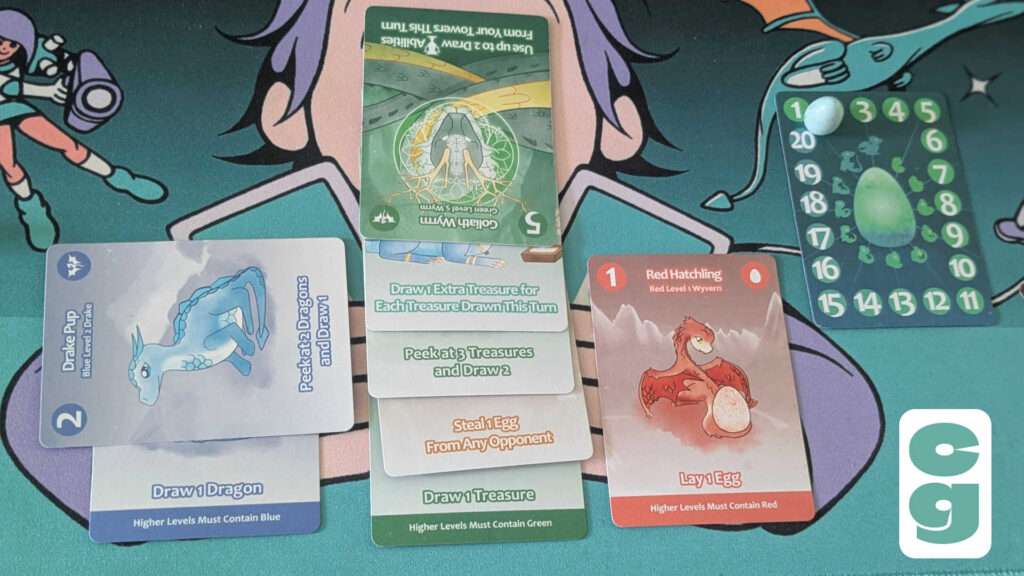
If Treasure is gained at any point, the top card of the Treasure deck is drawn, the player taking it may look at it, and then it is placed face down to become part of that player’s Hoard. Sometimes the luck of the draw can leave you with few, or no, options in extreme cases; at any point, players may exchange 4 of any “Token” for 1 of any other Token (with Tokens being classified as Dragons in hand, Treasure cards or Eggs).
The final step of every turn is to discard down to 7 cards in your hand, and then play passes to the next player. The game ends immediately when the last Dragon or Treasure card is drawn. Players then score their towers, Eggs and Treasure cards; each Level of a tower is worth its respective value (so a Level 5 tower is worth 1+2+3+4+5 points, for a total of 15 points), Treasure cards are worth their face value and each Egg is worth 1 point. The player with the highest points total wins the game.
Is Dragonlings Fun to Play?
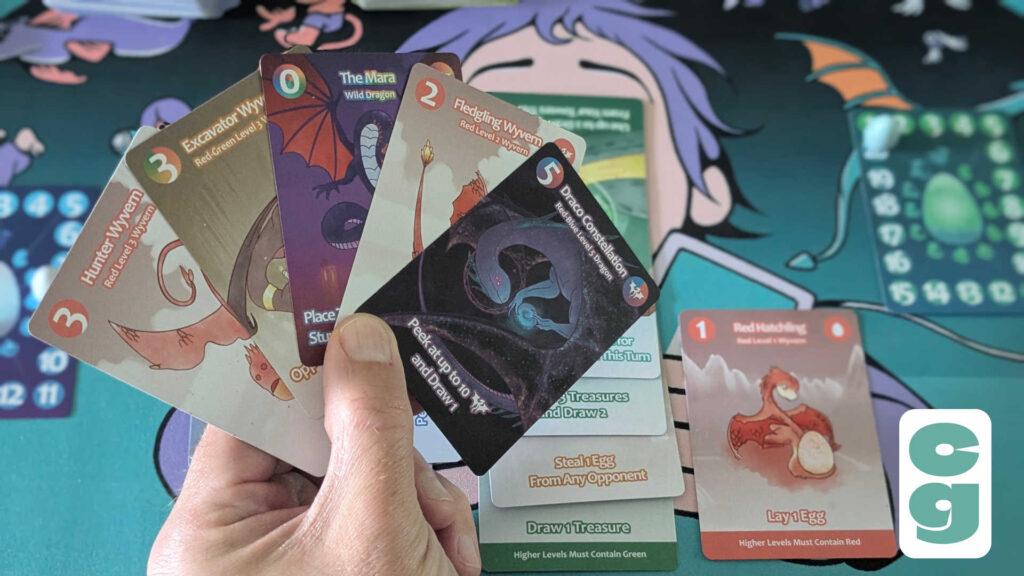
One of the best things about Dragonlings is that it’s an accessible game for all ages, and just about anyone can pick it up and get playing very quickly indeed. There’s so many different types of Dragon to discover, and use, and this variety, as well as the numerous options available in how to use Dragons and their abilities each turn gives players a surprising wealth of ways to achieve those precious victory points. Though some card abilities do target other players, it never feels too nasty, and that cozy feel is of course prolonged by the lack of direct aggression or combat in the game.
It’s also beautiful in terms of its illustrations; there’s a great deal of charm to each of the different Dragon designs, and their bright colors, and playful, whimsical designs give Dragonlings plenty of visual appeal.

The rules are a little brief and can be a bit vague, however, with a few situations, that’ll pop up quite quickly as you play, which could definitely do with a bit more clarification. It’s less daunting to read rules that are so brief, but a bit more elaboration on certain game elements wouldn’t have gone amiss. Online tutorial videos do deal with some of these situations in a much clearer manner than the printed rules, but players shouldn’t be hunting for answers elsewhere if they don’t find what they need in the rules as printed.
Though this could be my own color blindness, I found that some combinations of colors were difficult to interpret using the circles on each Dragon card, but this is solved by reading the card text, rather than relying on the visual indicator. There’s also the sense that the Dragons you have access to in your hand, or those you draw as Hatchlings, can be overly subject to the luck of the draw. Though of course that’s the nature of just about any card game, players can be hampered by the cards they have available, if colors or Dragon levels in their hand don’t match what they currently need.

The 4:1 exchange of Tokens (such as the Treasure cards above) does mitigate this a bit, of course, and is a welcome inclusion. There’s also the fact that this randomness at the expense of a deeper strategy can make the game more appealing to younger or more inexperienced players, who will be able to compete on a bit more of a level playing field.
Though this reliance on luck does make Dragonlings have more in common with chaotic experiences such as Doomlings or Exploding Kittens, its cozy demeanor, along with the many ways that players can earn points, make it a much more appealing, not to mention family friendly, experience than either of those titles.
The Card Gamer Verdict
The cute and cozy aesthetic of Dragonlings gives it an immediate, family friendly appeal, reinforced not just by its whimsical illustrations, but with its cute, three-dimensional egg tokens too.
The game is easy to learn, but the rules could be a bit clearer about things such as 0 Level Dragons and choosing/drawing Trainer cards, as just a few examples, along with some other elements of gameplay that could do with further clarification.
Dragonlings is, however, an enjoyable and light game; what it loses in deeper strategy is made up for with light and fast-paced gameplay, that just about anyone can pick up and play in no time.
Check out our reviews of other family friendly card games, such as Super Meow and Ninjan.


